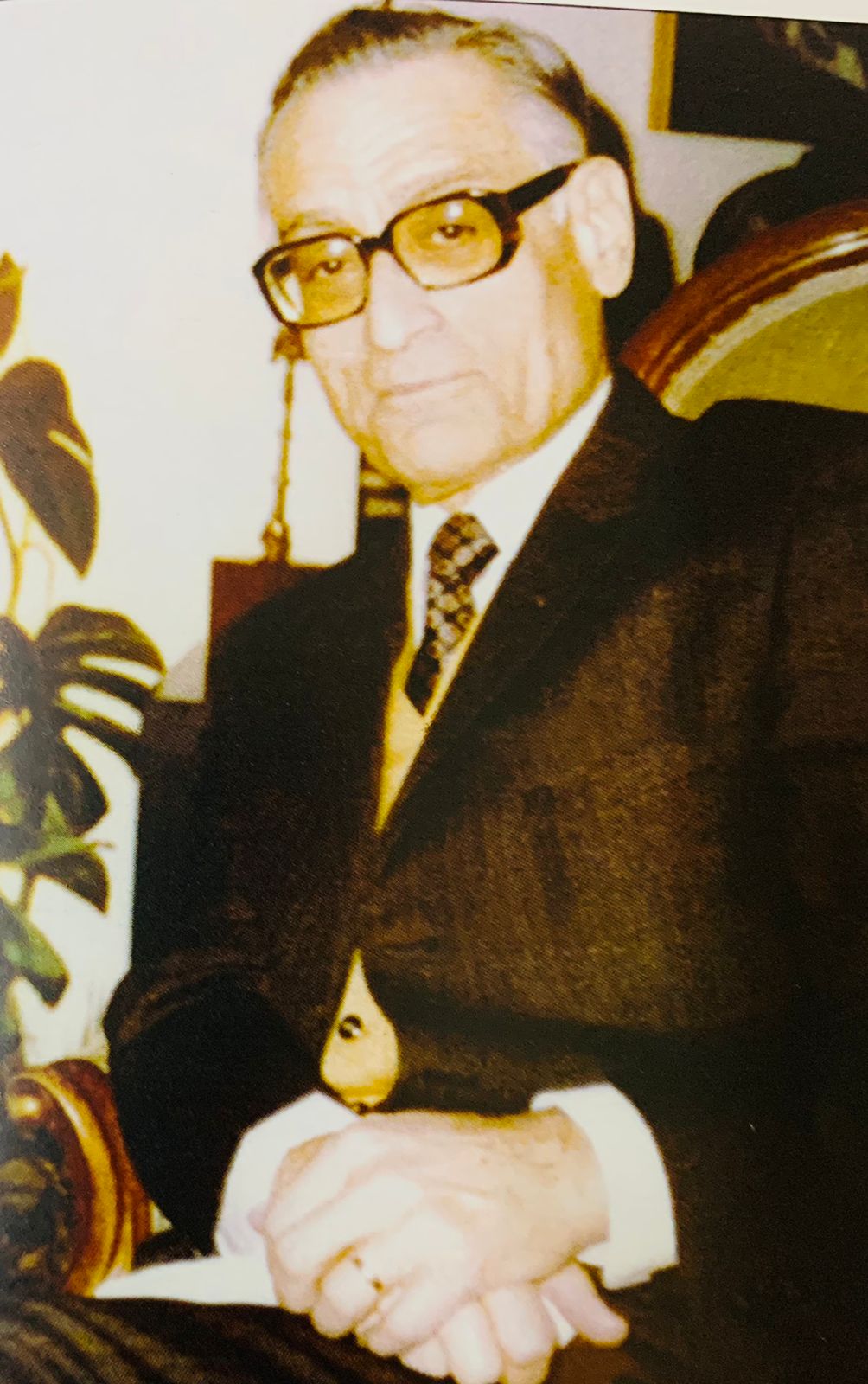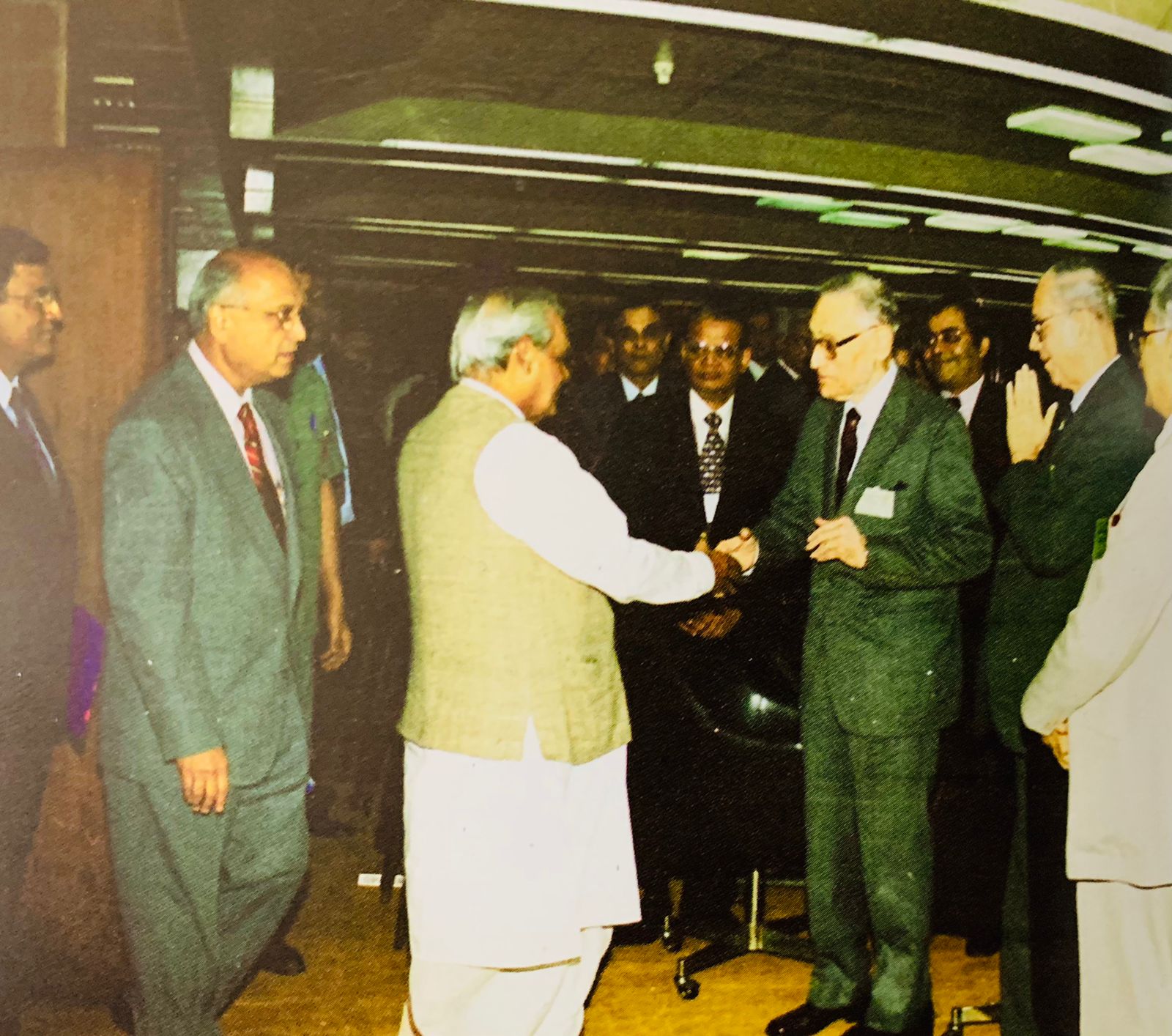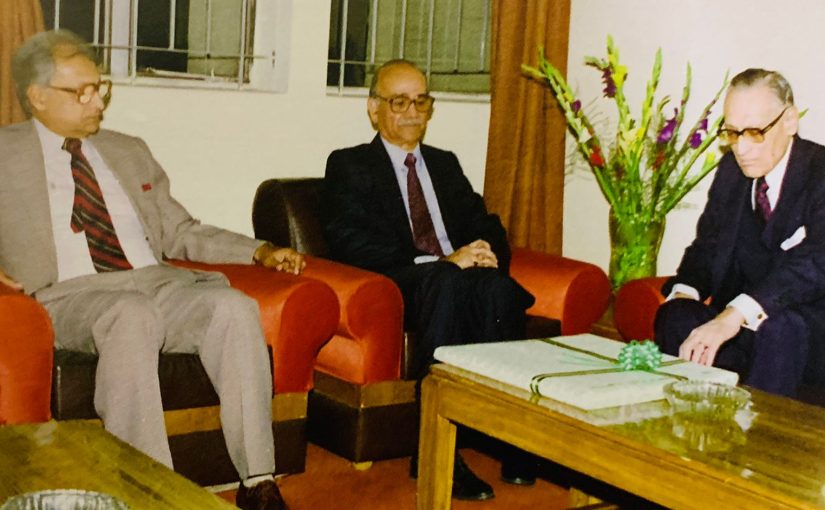Two decades ago today, one of India’s modern day heroes—albeit one who always shunned the limelight—passed away quietly. Rameshwar Nath, (RN) Kao or ‘Ramji’ to friends, was the quintessential backroom operator. I had the opportunity in 2019 to author a biography of RN Kao, the founder of ARC and R&AW. The book is neither history nor a detective thriller. It is by no means a comprehensive chronicle of the R&AW either. Just read it for what it is: a short glimpse into how organisations tasked to protect India’s national interests took shape. Here’s my take on how the Aviation Research Centre came into existence and why. Here’s a an excerpt.

The 1962 Shock and the Formation of ARC
The Indian debacle in the 1962 war with China prompted many changes in the Indian security establishment, especially in the intelligence set-up. The IB, which was the sole agency handling both internal and external intelligence, felt the need for specialised organisations that could look after the gathering of technical intelligence, run clandestine operations into Tibet and even operate behind enemy lines across the Himalayan frontier. As a result, two new important organisations—the Aviation Research Centre (ARC) and the Special Frontier Force (SFF)—were created under the IB. The ARC was established on 4 June 1963, and RNK headed the organisation from 1 September 1963 until 1 November 1966. The ARC was the product of an intelligence cooperation agreement between India and the US in the immediate aftermath of the 1962 war. Eight C-46 aircraft and four smaller planes with their pilots were deployed to a secret Indian air base, code named ‘Oak Tree’. Now we know that it is at Charbatia in Odisha.
Later, the ARC started operating from Sarsawa in Uttar Pradesh, Doomdooma in Assam and Palam in Delhi. Its task was to get photographic and technical intelligence from inside Tibet and Xinjiang.
The SFF was formed on 14 November 1962, a week before the Chinese declared a unilateral ceasefire. Initially, it was known as ‘Establishment 22’ or ‘two-two’ because its first chief, Major General Sujan Singh Uban, had earlier commanded the 22 Mountain Brigade, revealed author and historian Claude Arpi.1 On 19 November 1962, the Chinese Peoples’ Liberation Army (PLA) had come close to Tezpur in the plains of Assam, having made almost unimpeded progress through the Kameng sector in the then North-East Frontier Agency (NEFA)—now the state of Arunachal Pradesh. Faced with this dire situation, Prime Minister Jawaharlal Nehru was seeking urgent military help from the US.
Arpi added, ‘On 19 November, the day after Nehru sent two panicky letters to the US President, a crucial meeting to answer Nehru was held in the White House. The then Secretary of Defence Robert McNamara, the Secretary of State Dean Rusk, as well as his Assistant for Far Eastern Affairs, Averell Harriman, a most respected diplomat and politician, were present. The CIA bosses were also in attendance. The declassified US archives tell us: “McNamara urged that the first move be to find out what the real situation was. If we were to put our prestige and resources at risk, we must find out the score. He proposed sending a small high-level military mission immediately to Delhi. including State and Intelligence people in order to concert a plan of action with the Indians.”’
Nehru’s letter to then President of US, John F. Kennedy (JFK), was a desperate appeal to prevent the Chinese from taking control of the Northeast. He wrote, ‘The situation in the NEFA command has deteriorated still further. Bomdila has fallen and the retreating forces from Sela have been trapped between Sela Ridge and Bomdila. With the advance of the Chinese in massive strength, the entire Brahmaputra Valley is seriously threatened and unless something is done immediately to stem the tide, the whole of Assam, Tripura, Manipur and Nagaland would also pass into Chinese hands. The Chinese have amassed massive forces in the Chumbi Valley between Sikkim and Bhutan another invasion from that direction appears imminent…’
Nehru then went on to ask for immediate assistance in strengthening the Indian Air Force (IAF), which, he said, was not well equipped. ‘We have repeatedly felt the need of using the air arm in support of land forces, but have been unable to do so as in the present state of our air and radar equipment, we have no defence against retaliatory action by the Chinese. I therefore request that support be given immediately to strengthen our air arm sufficiently to stem the tide of the Chinese invasion. ‘“I’m advised that for providing adequate air defence a minimum of 12 squadrons of supersonic all weather fighters are essential. We have no modern radar cover in this country. For this also we seek your assistance. Our needs are most immediate. The United States Air Force personnel will have to man these fighters and radar installations while our personnel are being trained…” Any action to be taken against the Chinese beyond the limits of our country for example in Tibet will be taken by IAF planes manned by Indian personnel…’
McNamara’s delegation arrived in India three days later; during their stay, the CIA officials held lengthy discussions with Mullik. According to Jonathan Knaus, author of Orphans of the Cold War: America and the Tibetan Struggle for Survival, the CIA station chief in India, ‘The Indians were interested in the Tibet program because of its intelligence collection value… Mullik was particularly interested in paramilitary operations.’ In the end, the Chinese declared a unilateral ceasefire on 20 November, obviating the necessity of immediate American military aid. Over the next six months, the Americans helped India in different ways. The National Security Action Memorandum number 209, approved on 10 December 1962 by JFK, authorised a new military aid package for India. Under the aid programme, it was decided that the US would:
- Assist in creating and equipping six new mountain divisions to work with the Indian Army to guard the Himalayas.
- To help India increase its own arms production facilities.
- Prepare for a US-UK air defence programme for India.The first two missions were to assist India develop its capabilities and the third was a joint American-British military exercise in India. Kennedy wanted the funding for the program to be split evenly with the United Kingdom and its Commonwealth partners. Eventually, the Americans did provide military assistance to India, but the India-US cooperation was far better in clandestine operations with the help of SFF and ARC. According to Bruce Riedel, ‘The CIA agreed to support the SFF with a clandestine air force. The SFF conducted cross border reconnaissance operations to place sensors for detecting nuclear and missile tests and devices for intercepting Chinese military communications.’
Arpi noted, ‘Mullik and Des FitzGerald, the CIA’s Far East division chief, agreed that the IB with CIA support would train a 5,000-strong tactical guerrilla force; the CIA’s Far East Division would create a strategic long-range resistance movement inside Tibet and the Tibetan freedom fighters in Mustang (Nepal) would remain under the CIA’s control.’

RN Kao with Prime Minister Atal Bihari Vajpayee.
Riedel claims Nehru was an enthusiastic supporter of the projects. ‘He visited the main SFF training camp in the Himalayas on 14 November 1963 and the secret air base Oak Tree on 2 January 1964 to see the covert action first hand. The second project for which India provided support was the training of Tibetans at Camp Hale in Colorado and at other CIA facilities before they were sent to Tibet. Over 135 Tibetans were trained there to operate behind Chinese lines in their homeland. The Indians were not eager for them to be parachuted into Tibet, however, because this action would be very provocative. Instead, the resistance fighters would infiltrate across the line of actual control with help from the Intelligence Bureau. Between 1964 and 1967, 25 teams of fighters were sent into Tibet. The members of one team survived for 2 years inside Tibet but the rest of the teams were either captured, killed or came back to India almost immediately after crossing the line of actual control. The project was abandoned in 1968.’8 Riedel said the CIA played the lead role in a third project, which was to revitalise the Tibetan force in Mustang. To coordinate all the three projects, a special centre within the IB was set up in New Delhi in November 1963. Despite much prodding by CIA, however, the Mustang force carried out almost no missions across the border into Tibet. It was gradually shut down by the CIA and the fighters helped to find new jobs in drug factories and hotels in Pokhra in Nepal. JFK was also fully briefed on them. ‘In 1964 the CIA was authorised 1,735,000 dollars for the joint projects, a significant amount for covert programs. But except for the SFF patrols, the project had little success,’ Riedel quoted Knaus.
However, the joint IB-CIA programme had one positive fallout. Even as the ARC and SFF were getting off the ground, the Americans asked for permission to fly U-2 missions over Tibet and Xinjiang and Prime Minister Nehru approved this. While the ARC’s primary assets, the C-46 aircraft, gathered intelligence on the PLA that proved useful to the Indian Armed Forces and its intelligence agencies, those over Xinjiang gave the Americans best available information on China’s proposed nuclear test site at Lop Nur.
In early 1964, a U-2 detachment was based at Charbatia at the ARC base. The U-2 plane flew several missions over western China to obtain imagery reports, confirming China’s plan to test a nuclear device. Riedel said, ‘On 26 August 1964, a special National Intelligence Estimate told President Lyndon Johnson (who had succeeded JFK), that on the basis of new overhead photography, we are now convinced that the previously suspect facility at Lop Nur in Western China is a nuclear test site which could be ready for use in about two months.’9 Sure enough, China tested its first nuclear device at Lop Nor on 16 October 1964.
During this period, RNK, who was setting up ARC from scratch, established close contacts with the American intelligence bureaucracy. For nearly two years, the ARC and American intelligence operatives and technical hands worked in tandem to make ARC one of the most effective and crucial TECHINT resources in Asia. After important overseas assignments in Ghana and Hong Kong and taking care of Prime Minister Nehru’s security between 1959 and 1962, RNK would become an institution builder as the next decade would show.


January 20, 2022 -
An excerpt worth reading. Your book aslo makes a good read. I have a copy.
January 20, 2022 -
I will not place an order for the book with Amazon as they take the money and will not deliver the book. I paid Rs.425 to purchase the book by Shri. H.K. Deka former DGP titled the Guilt.,in Aug.2021 and till day I have not received the book.